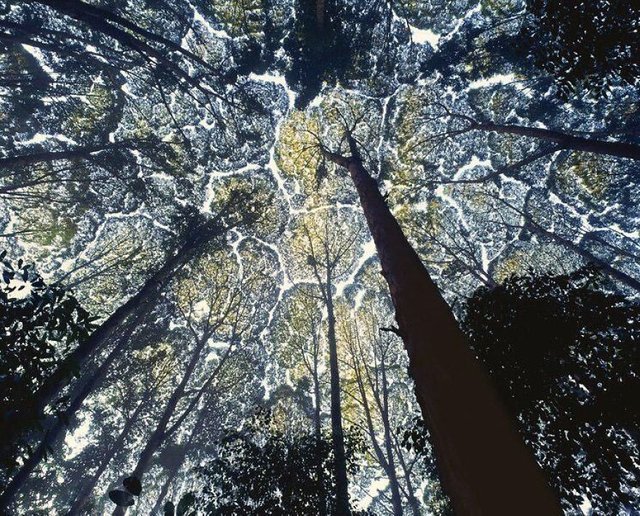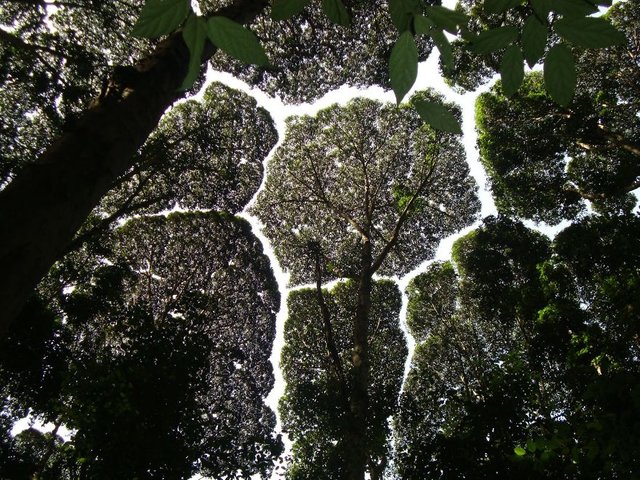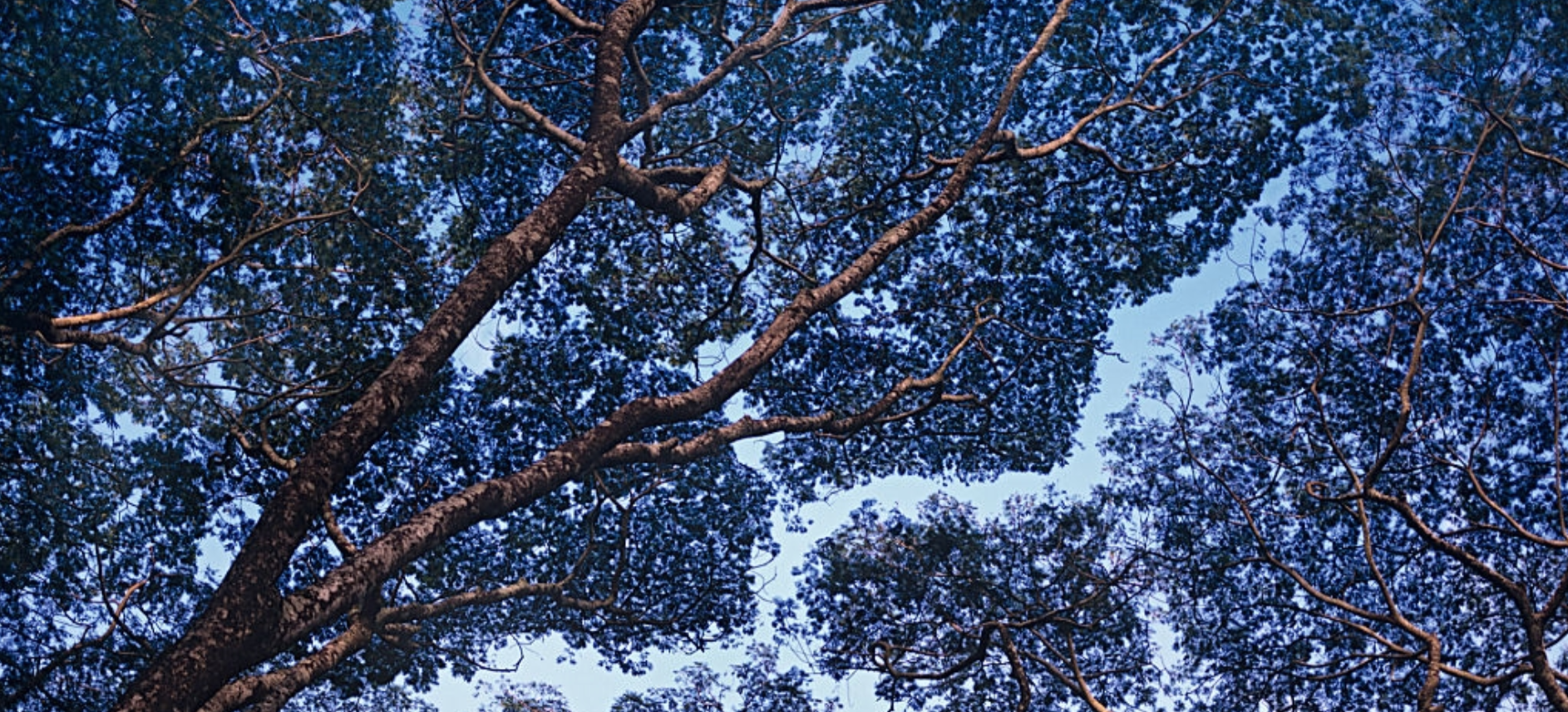Crown Shyness -- [ Today I Learned, Dec. 4, 2017 ]

‘Crown Shyness’: that’s the term for what’s going on in that picture. It’s a little-understood arboreal phenomenon observed in several species of trees around the world. Each tree stops short the growth of its uppermost branches to give its neighbors a bit of room. Crown shyness can occur between trees of different species, or even between different sections of the same tree. No one’s sure exactly why it happens, though there are a few good reasons it might.

For one, this arrangement does a good job of optimizing the amount of light that each tree gets, while the little bit of unused space allows some light to reach the forest floor, giving smaller plants a better chance of growing and improving the overall health of the ecosystem.
The space left between trees also gives each a bit of room to sway in the event of strong winds, reducing the likelihood of the branches of one tree crashing into those of another and being broken.
More recent research suggests that crown shyness also helps trees prevent the larvae of harmful insects from spreading infestation from one individual to another.

While it’s not known exactly how the trees know where to stop the growth of their branches, there are at least two ways the might be doing it.
One theory is that it’s a learned behavior in each individual instance. The trees, in this case, would continue to grow until they hit each other at which point their branches would begin to be broken off by those of their neighbors. Overtime, neighboring trees would then develop a ‘memory’ of sorts of the borders of their nearest fellows in order to know when to stop growing.
Another possibility is that trees can see one another (kind of...)! Trees, like most plants, have the ability to sense light and move toward it. It’s known that they can use this ability to sense occupied regions of shade near themselves. It’s possible that in instances of crown shyness, trees make use of this sense to identify the position of nearby neighbors.

Whatever the cause for crown shyness, and however it happens, it’s definitely really beautiful, so enjoy these photos!
There are plenty of really nice ones online. Depending on where you live, you may be able to find instances of crown shyness next time you're walking through the woods.
That’s what I learned today! :D
Dec. 4, 2017

All photos in the article came from Google Images
Well, you taught me something. I didn't know about this and I love trees. Seriously. May I ask where you found the photos?
I just found them by googling haha. I found out about crown shyness itself from a friend of mine who studies biology. I'm glad you learned something though! :D
I really liked your post. It's always a good idea to give image credit though. ;-)
Oh you're right! I'm new to this; It didn't even occur to me.
I'll throw a little thing in at the bottom.
Oh gosh, it'll just say like 'images found on google images' haha
We're all new at some point, so that's OK. I looked them up for you and your images are all stock photos. But you may want to be careful with photos on Google. They're not always free from copyright.
This post by @rhondak explains it very well.
A good alternative for Google searches are stock websites like Pixabay. ;-) Looking forward to your next post.
Interesting phenomenon, I have never heard of this. Thank you for enlightening me.
My pleasure! Thanks for reading